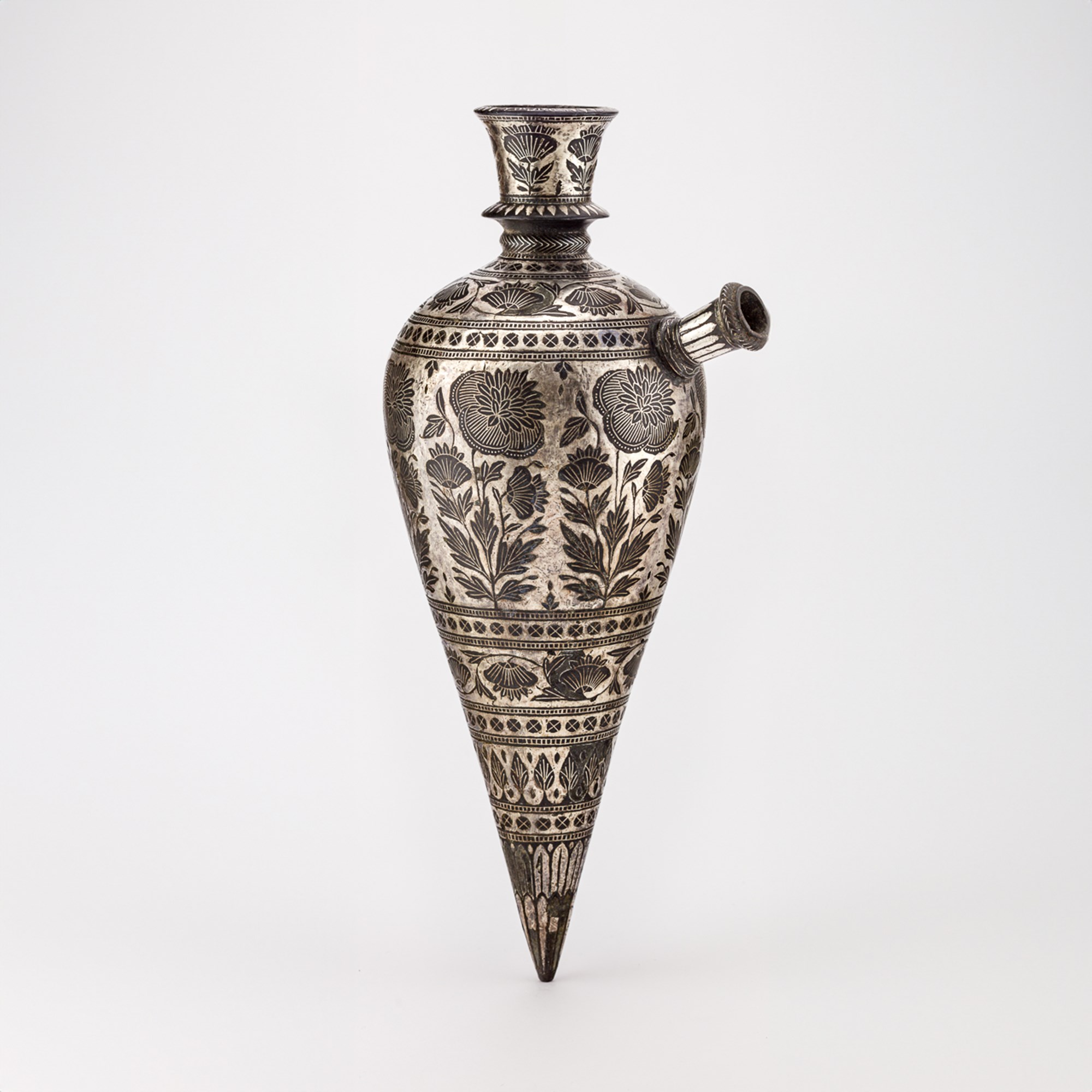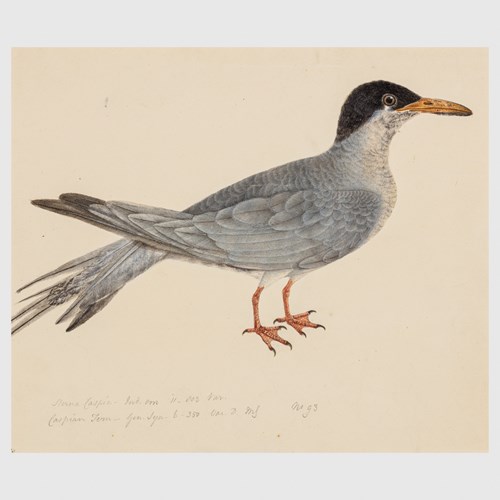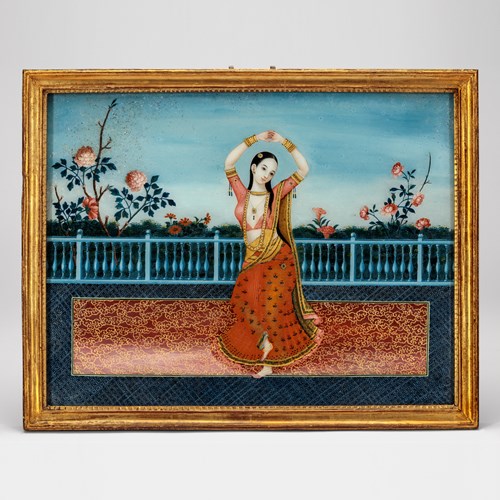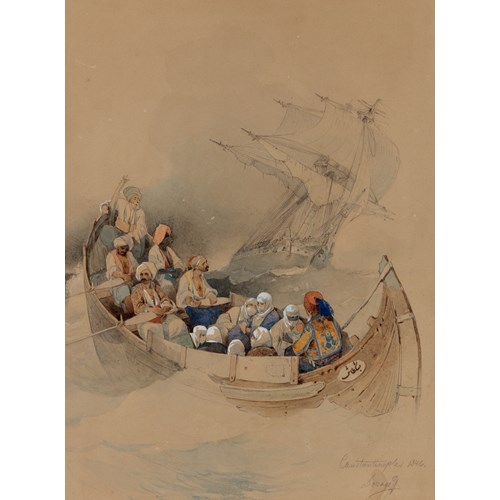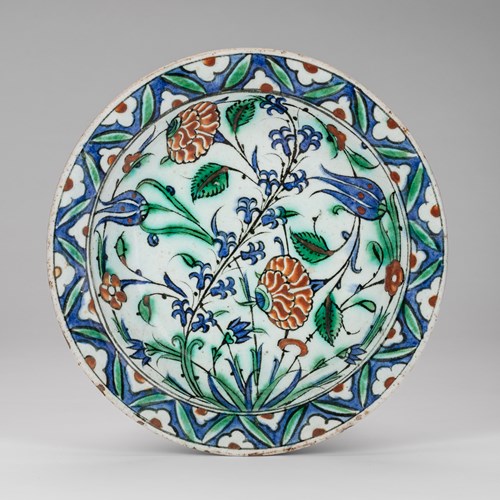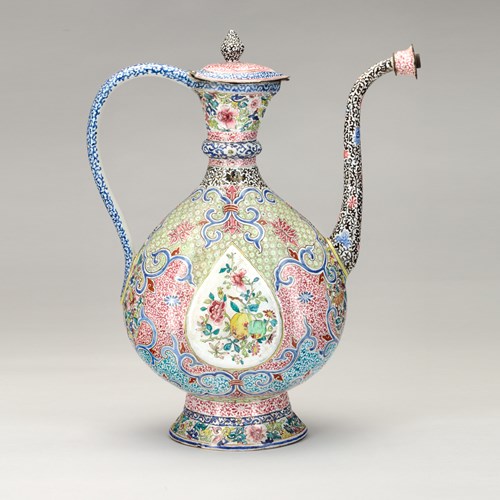Marketplace
Mughal Bud-Shaped Huqqa Base
Floral motifs appear in much of the decorative arts of the Deccan during the Mughal period, emerging under the influence of Persian painting and European botanical studies.1 Large ‘Hyderabad poppies’ are created with the aftabi technique, a sub-category of Bidri-ware, whereby the base has been covered in sheet silver and areas have been cut out and inlaid with silver wire. Not only does this technique allow for more intricate designs, but it is also more costly. These poppies can also be seen on a globular huqqa base in the Minneapolis Institute of Art Collection (accession no. 82.10.1) dating to the late 18th century. The motif is also illustrated in Owen Jones’ The Grammar of Ornament, Plate XLIX no.15, which he copied from bidri huqqas at the Great Exhibition of 1851 in London.2
The bud-shaped or conical huqqa base became popular in the late 18th to mid-19th century in India. It was designed to be held in the hand of the smoker or their servant.3 Miniatures dating to the 17th century depict a conical huqqa base being used like this (pictured in Zebrowski’s Gold, Silver, & Bronze from Mughal India).4
Three similar conical huqqa bases decorated with Hyderabad poppies in bidri are housed in the Los Angeles County Museum of Art (accession no. M.81.181) dated to the early 19th century, the Metropolitan Museum of Art, New York (accession no. 91.1.588) dated to the 18th-19th century, and the Victoria & Albert Museum, London (accession no. CIRC.198-1911).
Bidri originates from the city of Bidar, in the state of Karnataka. Objects such as huqqa bases, ewers, spittoons and pandan were made from bidri from at least the beginning of the 17th century.
n.b. all accession nos are clickable links
1 Robert, ‘A Decorative Motif in Mughal Art’, in Pratapaditya Pal (ed.) Aspects of Indian Art: Papers Presented in a Symposium at the Los Angeles County Museum of Art, October 1970.
2 Jones, Owen. The Grammar of Ornament. London: 1856. pl. XLIX, no.15.
3 Mittal, Jagdish. Bidri Ware and Damascene Work in Jagdish & Kamla Mittal Museum of Indian Art. Hyderabad: 2011. 116.
4 Zebrowski, Mark. Gold, Silver & Bronze from Mughal India. London: Alexandria Press in association with Laurence King, 1997. P. 238. Pl. 403 and 405.
More artworks from the Gallery


